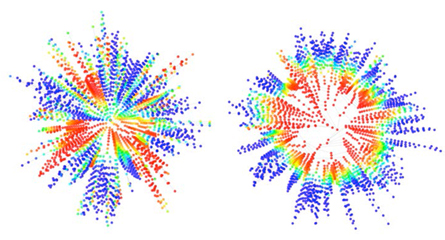- More than 2 years ago
BOSTON — Predicting the future is notoriously difficult, but uncovering the past can be just as tricky. Now researchers have developed a method that looks backward and may reveal where a widespread phenomenon originated, be it the outbreak of a disease or a new technology.

Typically techniques for deriving the origin of something rely on the notion that whatever is spreading will take a certain time to travel a certain distance. But with planes, trains and automobiles, geographic distance by itself is no longer a good predictor of arrival time, said Dirk Brockmann, who presented the new approach February 28 at a meeting of the American Physical Society. That population densities aren’t uniform across an area makes estimating spread using geography alone even more difficult.
The new method still relies on distance, but not one constrained by geography. Just as diagramming the relationships among friends can yield close or “coupled” people, even if they live far apart, diagrams of relationships among locations that consider the traffic between them can yield coupled locations. Using such relationships, Brockmann, of Northwestern University in Evanston, Ill., and his colleagues came up with a way to compute paths that are in effect the shortest between locations, even if they are far apart geographically.
Once that path diagram is in hand, the researchers can test whether various starting points might be the root of the branching, treelike spread of whatever phenomenon is being studied. A clean, circular diagram emerges when the correct root is identified, computer simulations reveal.
“Computer simulations are among the most useful tools in our armory,” says Bill Hanage, an epidemiologist at Harvard School of Public Health who has been tracing the origins of last year’s E. coli outbreak in Europe, which killed dozens of people. Such simulations are particularly helpful if they work even with poor or biased samples of data, he says.







